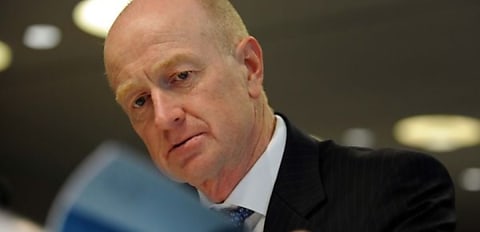The current Macquarie chairman and former Reserve Bank of Australia governor, Glenn Stevens, has suggested that the current inflationary environment could mean tough times ahead.
Speaking at the Australian Petroleum Production and Exploration Association conference in Adelaide on Tuesday (16 May), Mr Stevens noted the current high inflation Australia is experiencing, adding that so-called ‘soft landings’ are uncommon.
When they have happened, he said, they have been in the context of “more favourable trend developments in supply than we appear to see at present”.
The economic figurehead has firsthand experience of how long inflation can hang around.
He succeeded Ian Macfarlane as RBA governor in 2006 and served for a decade, until September 2016. His tenure covered the global financial crisis, and European sovereign debt crisis and oversaw 29 cash rate adjustments.
Under his leadership, the RBA moved the cash rate from 6 per cent in October 2006 to a high of 7.25 per cent in August 2008. When he retired, it was 1.5 per cent.
Navigating financial crises as a central bank governor gives you serious credibility. But some people forget that Mr Stevens is almost a central bank lifer.
In his early 30s, the University of Sydney graduate was working in the RBA research department during a period of record-high inflation.
In 1991, he authored a piece of research titled Inflation and Disinflation in Australia: 1950–91, which stressed how persistent inflation has historically been in this country.
“Australia saw a big rise in inflation in the mid-1970s, along with other countries,” he wrote.
“In fact, this paper has emphasised the importance of foreign shocks for Australia’s inflation rate. What was remarkable about the mid-1970s was not the magnitude of the rise in inflation — that was not unprecedented at all, as a glance at the 1950s demonstrates — but the fact that high inflation persisted, only being finally reduced to quite low levels by the early 1990s.
“Other countries had difficulty in combating inflation too, but Australia’s performance deteriorated relative to other countries in this period — it went from being a relatively low inflation country in the 1960s, to a relatively high inflation one in the 1970s and 1980s.”
Critically, he touched on the consequences of trying to tame inflation.
“It makes sense to think of this as an open economy extension to the simple Phillips curve world. There is no long-term trade-off between real variables (output, current account) and inflation. But there is some short-term trade-off. There is always some temptation to exploit the short-term trade-off for more real quantities by inflating (or, the same thing, devaluing the currency),” he wrote.
He concluded by contrasting what was then the present situation of 1991, where inflation had been reduced to 2 per cent, with 1989 when inflation was just over 7 per cent.
“It is to be hoped that all of this portends a sustained period of general price stability,” he said at the time.
This week, the same man who had witnessed 30 years of deflation, was no doubt reminded of his earlier years.
“The way monetary policy works isn’t by somehow miraculously affecting final spending and nothing else,” he said on Tuesday (16 May). “It works by affecting financial conditions and the viability of a range of financial structures, business models, asset valuations and so on.”
Mr Stevens stressed that today’s policymakers must make “very difficult judgements” as they balance constrained spending with financial stability.
“It is probably a bit optimistic to think that all the problems have yet emerged,” he said.
For a man whose professional career has largely been lived in deflationary conditions, the former RBA boss still remembers the real-life consequences of stubbornly high prices.
[Related: Will structural inflation be the end of property growth?]
